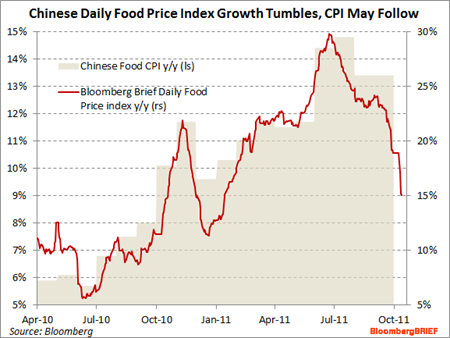The People’s Bank of China published the latest set of monetary statistics, which are no longer reliable…
M2 Money supply grew by 13.0% yoy, well below the long-run pre-financial crisis average rate of around 16.8% yoy and slowest in many years, and less than the expected growth of 14% yoy, while M1 rose by 8.9% and currency in circulation increased by 12.7%.
New Chinese yuan loans in September amounted to RMB470 billion, which is below expectation of RMB550 billion, and well below the RMB 548.5 billion of new loans in August. Total deposits in September amounted to RMB81.03 trillion, increased by 13.9% compared to a year ago. Chinese Yuan deposits amounted to RMB79.41 trillion, rising 14.2% compared to a year ago.
At the end of September, Foreign Exchange Reserve US$3.20 trillion, which is also below expectation of US$3.33 trillion:
But I began by saying that the figures have become less reliable now. And this is why: last month after the People’s Bank of China announced its monetary statistics for August, it published a short note on the money supply figures. This is what it says:
China’s financial innovation has been growing, thus there has been more diversified products available for households. At the start of this year, there has been a huge growth in banks’ off-balance sheet wealth management products, which is outside of the regular deposits. The M2 money supply does not include these off-balance sheet products as part of the measurement, thus the M2 being reported has underestimated the money supply growth. In order to understand the actually financial condition, we are looking at including these off-balance sheet products and developing a new M2+ measures.
Thus it basically says that the M2 measure is no longer reliable, and the credit creation in the shadow banking sector is not fully accounted for in monetary statistics. So on the surface of it, the growth of money supply is slowing quite significantly in a recent months, a development which I very much welcome. But the reality is that it has excluded a whole lot of other measures, which should have been included as a broad money supply measures.
So on the surface of the data, the monetary tightening is having some real impact on money growth. In reality, no one knows.
Meanwhile, on the inflation front, Friday’s number did fall, the latest data from the National Bureau of Statistics shows that the headline consumer price index (CPI) inflation eased to 6.1% yoy in September from 6.2% yoy in August, in-line with expectations. On a month-on-month basis, the headline number rose 0.5% vs. 0.3% in August, which is not so welcome.
Food prices are still leading the gain, with prices up by 13.4% yoy, unchanged from August, while non-food prices rose by 2.9% yoy vs. 3.0% in August. Meat products are still the biggest gainer within the food category, which rose by 28.4% vs. 29.3% in August, coming down slightly. On a month-on-month basis, good prices rose by 1.1% vs. 0.6% in August, while non-food prices increased by 0.2%, unchanged from August.
On another note, the producer price index rose by 6.5% in September vs. 7.3% in August, lower than the expectation of 6.9%.
The year-on-year headline figures have been coming off the high, but the month-on-month trend certainly does not look like inflation is solved. However food prices are going to come off the high quite significantly, that’s according to the Bloomberg Brief’s Michael McDonough:

Given the high weight of the food basket within the CPI, we may see a more meaningful fall of the headline figure next month, but probably still way above 5%. Even with inflation coming off, however, the full-year overall target of 4.0% is lost. Overall, some progress on inflation.
For now, the probability of further tightening looks extremely low given the global macro picture as well as the local government debts and shadow banking crisis concerns, though it is hard to argue for outright easing as well as inflation will still be above target for quite a while. I do not expect any real tightening or easing for the moment.


